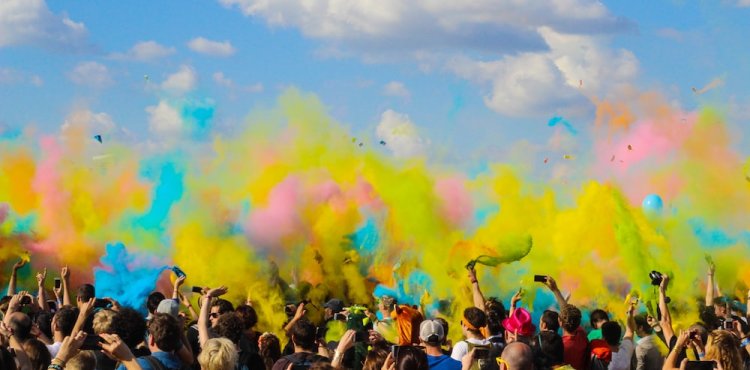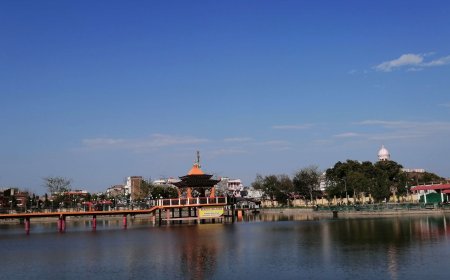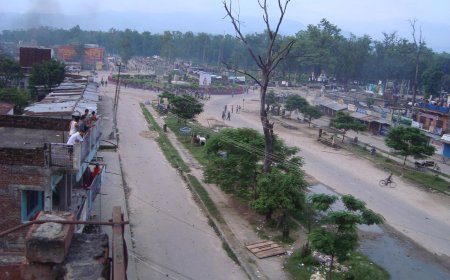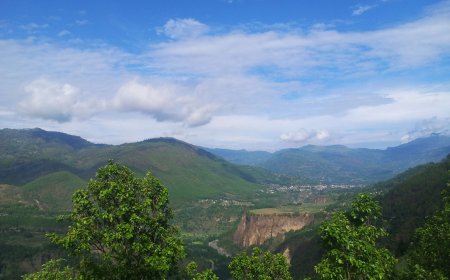Colors, Joy, and Tradition: Celebrating Holi Festival in Nepal
Discover the origins and significance of Holi, one of Nepal's most vibrant and colorful festivals, and learn about the preparations, social and cultural significance, and joy of celebrating with friends and family.

The Holi festival, also known as the "festival of colors," is one of the most exuberant and widely celebrated festivals in Hindu culture. It is a time of joy, unity, and the triumph of good over evil, and is marked by the throwing of colored powder and water, dancing, singing, and feasting. In Nepal, Holi is celebrated with particular enthusiasm and is a beloved holiday for people of all ages and backgrounds.
Origins and Significance of Holi
The origins and significance of Holi are deeply rooted in Hindu mythology and culture. As mentioned earlier, the festival celebrates the victory of good over evil, and is based on the story of Prahlada and his father, Hiranyakashipu.
According to the legend, Hiranyakashipu was a powerful king who sought to be worshipped as a god. However, his son Prahlada refused to worship him and instead remained a devoted follower of Lord Vishnu. Angered by his son's disobedience, Hiranyakashipu ordered him to be killed, but each time he tried, Prahlada was miraculously saved by Lord Vishnu.
Finally, Hiranyakashipu's sister, Holika, offered to help him by using her powers to enter a fire with Prahlada and emerge unscathed. However, the plan backfired, as Holika was consumed by the flames while Prahlada was protected by his devotion to Lord Vishnu. This event is commemorated in the "holika dahan" bonfire during Holi, which symbolizes the burning of evil and the triumph of good over darkness.
In addition to its mythological significance, Holi is also a celebration of spring and the end of winter. It is a time to let go of old grudges and negativity, and embrace the renewal and vitality of the season. The throwing of colors and water is believed to represent the blossoming of love and friendship, and the breaking down of social barriers and hierarchies.
In Nepal, Holi is celebrated not only by Hindus, but also by people of other religions and communities. It is a time when all Nepalis come together to celebrate their shared humanity and also appreciate the beauty and diversity of the country's culture and traditions. Overall, the origins and significance of Holi reflect the timeless themes of love, unity, and the triumph of good over evil, and continue to inspire people around the world to embrace these values and celebrate the joy of life.
Preparations for Holi in Nepal
Preparations for Holi in Nepal typically begin a few weeks before the festival. People start making colorful "pichkaris" (water guns) and "gulal" (colored powder) at home or purchase them from the markets. Shops and markets are filled with brightly colored dyes and paints, and people begin to plan their outfits and festivities.
In addition to the colorful items, people also prepare traditional sweets and delicacies such as "gujiya," a sweet pastry filled with nuts and dried fruit, and "thandai," a spiced milk drink. Families and friends also plan their Holi gatherings and make sure to invite loved ones to join them in the celebrations.
It is also common for people to decorate their homes with colorful lights and banners, and to clean and decorate the temple or place of worship in preparation for the festival. Holi is a time for joy and celebration, and people in Nepal spare no effort to make sure that they have everything they need to enjoy the festivities to the fullest.
The Festival Day
On the day of Holi, the streets of Nepal come alive with color, music, and dancing. The festivities begin with the lighting of a bonfire, known as "holika dahan," which symbolizes the burning of evil and the victory of good over darkness. People gather around the bonfire to sing, dance, and offer prayers.
After the bonfire, the throwing of colors and water begins in earnest. People roam the streets armed with water guns, balloons, and bags of colorful powder, shouting "Holi hai!" (It's Holi!). Strangers and friends alike are fair game for a colorful assault, and everyone is covered from head to toe in a rainbow of hues.
Along with the throwing of colors, Holi is also a time for feasting and celebration. Families gather together to share traditional sweets and delicacies, such as "gujiya," a sweet pastry filled with nuts and dried fruit, and "thandai," a spiced milk drink.
Social and Cultural Significance
Holi is more than just a festival of colors and fun; it has significant social and cultural implications as well. One of the primary cultural significances of Holi is the celebration of the diversity of the Nepali community. It is a time when people from all walks of life, regardless of their social, economic, or religious backgrounds, come together to celebrate the festival.
Holi is also a time to break down barriers between people and to promote social harmony. During the festival, people forget their differences and come together to enjoy the festivities. This promotes social cohesion and helps to build stronger communities.
Another important cultural significance of Holi is the celebration of the triumph of good over evil. The festival is a reminder that no matter how powerful evil may seem, it can be defeated through the power of faith, love, and devotion. This message resonates with people from all cultures and religions, making Holi a truly inclusive festival.
In addition to its cultural significance, Holi also has social implications. The throwing of colors and water is a symbol of the breaking down of social barriers and hierarchies. During Holi, people of all ages, genders, and social classes come together to celebrate, regardless of their status or position in society. This promotes social equality and helps to foster a sense of unity among people.
Overall, the social and cultural significance of Holi in Nepal is immense. It celebrates the diversity of the Nepali community, promotes social harmony and equality, and reminds people of the power of faith, love, and devotion to overcome evil. It is a time for people to come together, forget their differences, and celebrate the joy of life.
In conclusion, Holi festival in Nepal is a vibrant and joyful celebration of color, tradition, and unity. It is a time to come together with friends and family, forget our differences, and revel in the beauty and diversity of life. Whether you are a visitor or a local, celebrating Holi in Nepal is an unforgettable experience that will leave you with memories to last a lifetime.
What's Your Reaction?





































































































